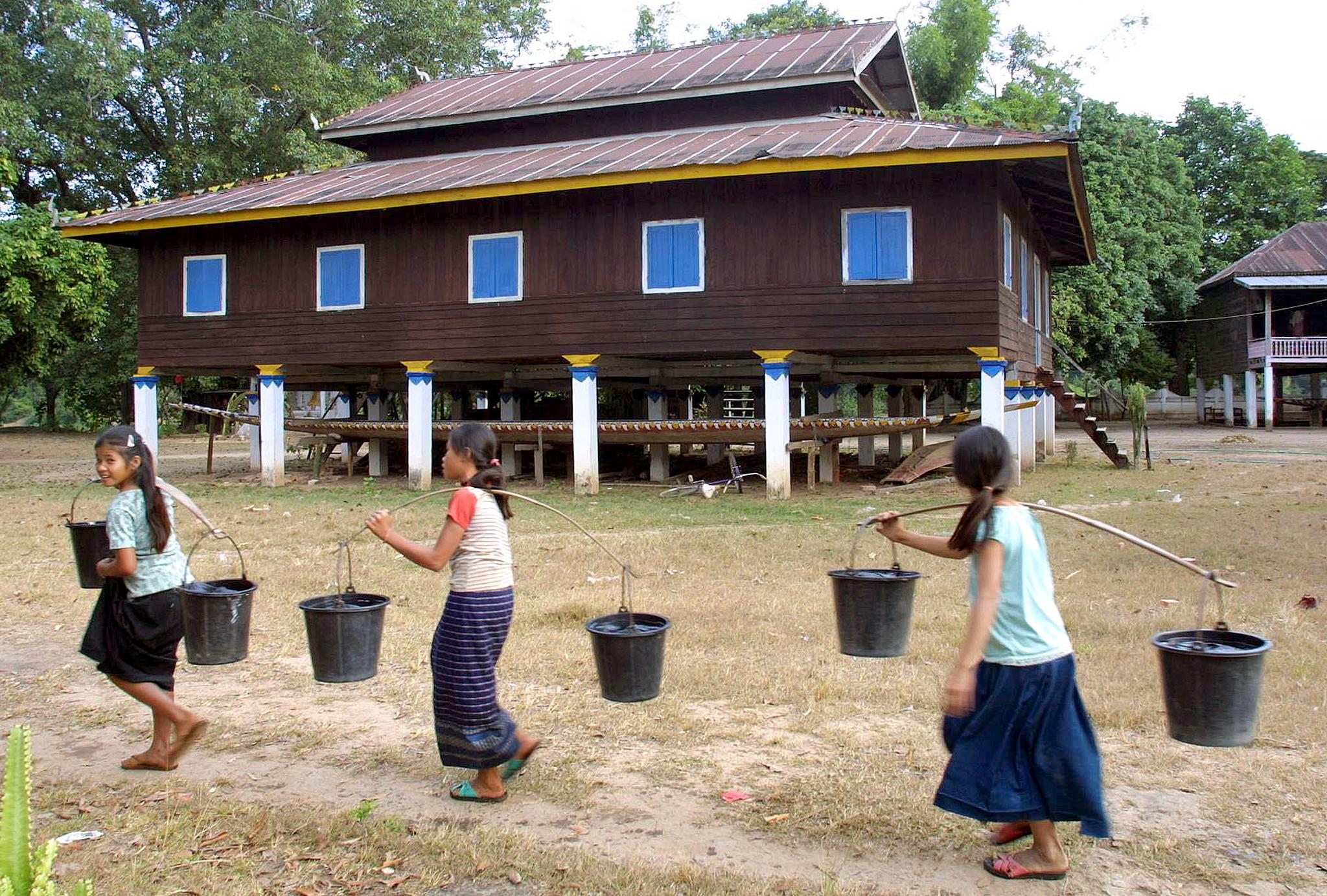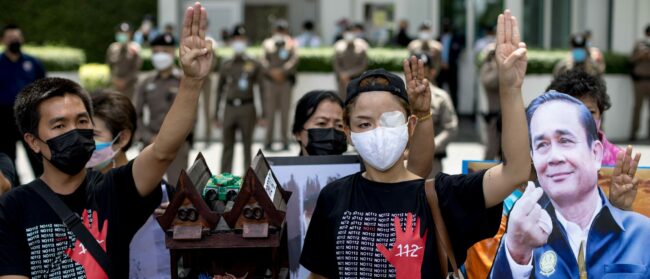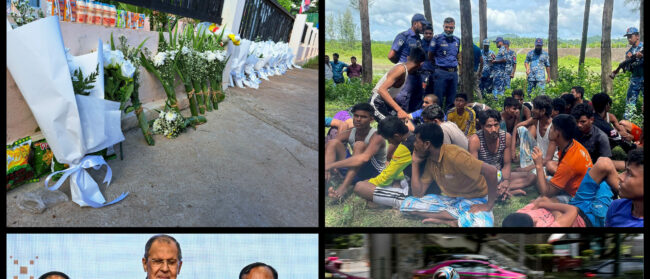Houa* sat on the doorstep of her bamboo house helping her grandmother pluck a chicken. She is not even ten years old, but she is learning how to become a ‘good wife.’
As the Covid pandemic and economic crisis hit the family hard, Houa dropped out of school in 2021 and started learning how to run a household in preparation for her upcoming wedding.
“She will be married in about two years,” Houa’s mother said. “We need her to be home and learn how to take care of the house so she can take care of her husband.”
Houa will soon be handed to a 15-year boy, 17 by the time of the wedding. He’s from Houa’s village, a small rural settlement of around 30 families in the northeastern province of Houaphan, Laos.
She currently lives with her parents, grandmother, and two younger sisters. Her four older brothers have left for Sam Neua, the capital city of Houaphan province, in search of profitable jobs.
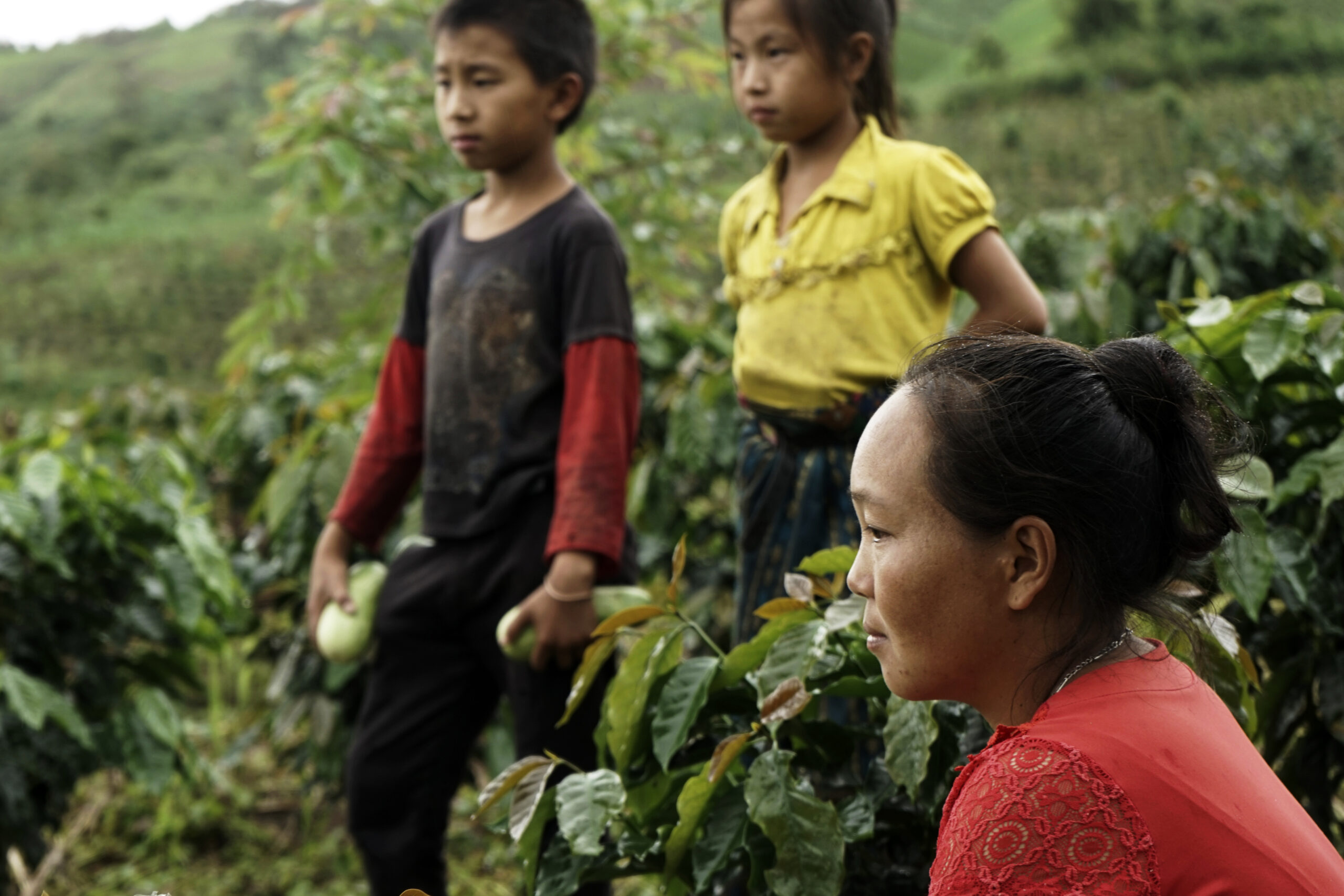
“We used to go sell bamboo and vegetables at the market, but now things have changed,” Houa’s father said. “For more than a year we couldn’t sell anything because of Covid. And now they [local administration] ask us to pay rent to have a place to sell our products in the market. We can’t afford it.”
Amid the most alarming economic crisis in the past two decades, thousands of Lao girls are rushed into dropping out of school and pressured to marry men to relieve their families from an unbearable financial burden.
Poverty is one of the key drivers of child marriage worldwide, and it’s broadly reported that Covid-19 has exacerbated this pre-existing driver for early marriage as the pandemic devastated employment opportunities. Across Laos, countless families had to endure worsening financial challenges.
Yali Zhang, Chief of Child Protection at UNICEF Laos, has long seen cases where children feel pressured to generate an income for the family and often marry young as a coping strategy.
“There is a higher risk for girls to be lured into marriages with foreigners due to their economic conditions,” Zhang said. “That very often leads to a higher risk of human trafficking. This is the reality, even though we don’t have solid [reported] evidence.”
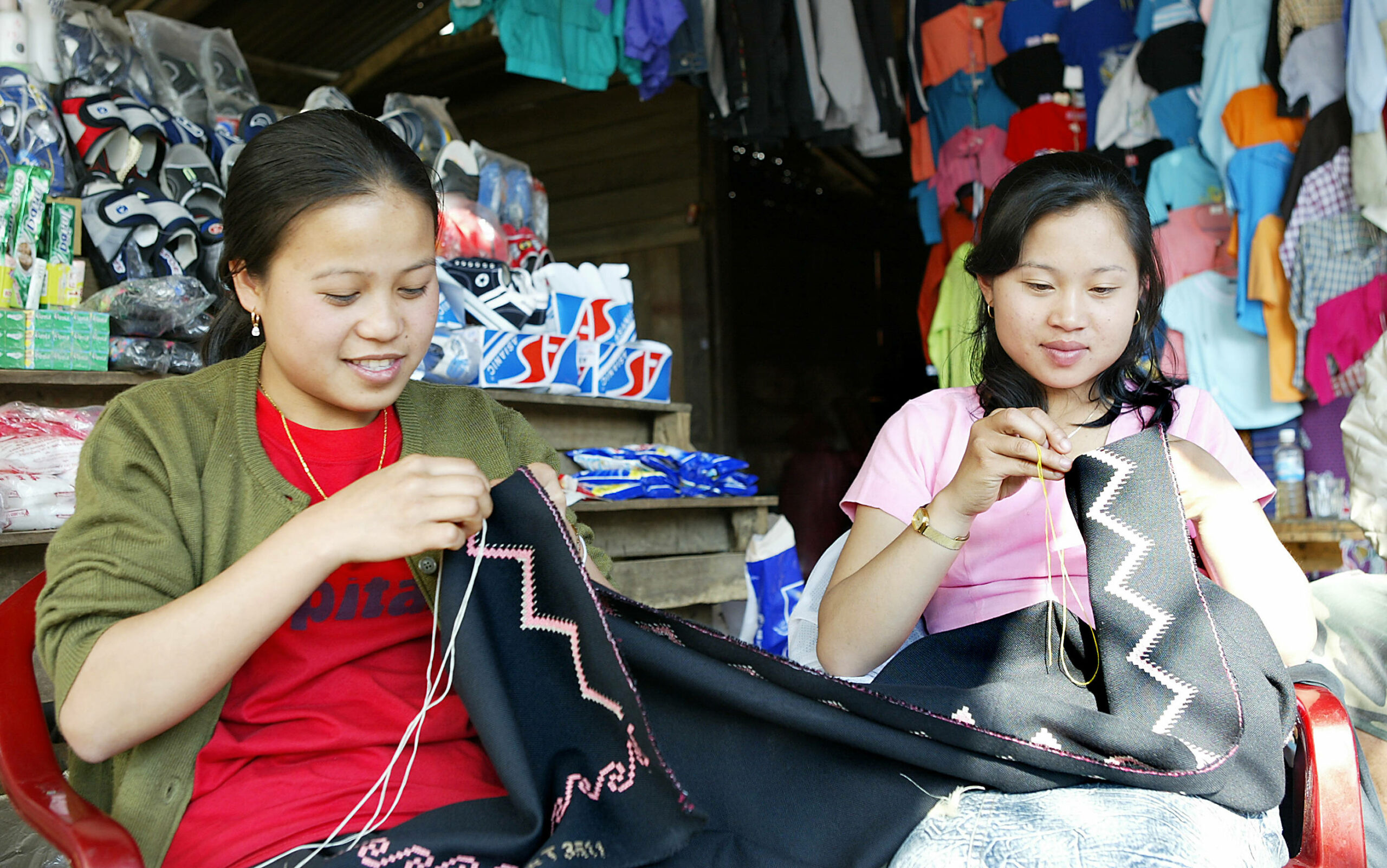
Global evidence supports Zhang’s claims.
Girls Not Brides, an organisation that aims to prevent child marriage and support girls who have, found that around 12 million girls under 18 marry every year, and often a large amount of those cases amount to modern slavery or trafficking in person.
According to international law, child marriage is a form of slavery, when the child has not or cannot consensually agree to a marriage, is subjected to abusive forms of control in the marital relationship, is exploited to work in and outside the marital house, and/or is forced to engage in non-consensual sexual relations.
Lao family laws prohibit marriage of children under the age of 18. The practice is punishable with a prison sentence of one to three years and a fine of up to $300 – three times an average Lao monthly salary – under the 2015 law on violence against women and children.
Whenever an economic crisis hits people, they fall into desperation to find solutions”
Mariam Khan, UNFPA country representative in Laos
Although the laws are already in place, the reality is that the inefficiency of law enforcement remains a problem across the country, according to Zhang, who believes that this deficiency is mostly “due to the lack of financial, human, and institutional capacity.”
From Mariam Khan’s experience, the UNFPA country representative in Laos, acknowledging child marriage as a problem is the first step towards effective and sustainable improvement.
“Whenever an economic crisis hits people, they fall into desperation to find solutions, which would lead them to take on more risks because of their vulnerability,” Khan said. “So how can we have more protection in place or informed behaviours so they can make less risky choices?”
High risk factors
According to a recent report from the Ministry of Planning, in collaboration with UNICEF and UNFPA, the pandemic has exacerbated poverty levels across Laos, causing an increase in early marriage and early pregnancies. The health crisis has “seriously affected” Laos’ development goals, worsened pre-existing risks and “disrupted progress towards smooth graduation from least developed country status,” said former Prime Minister Thongloun Sisoulith.
The 2021 report documented the likelihood of an increase in child violence as well as child marriage because of the Covid pandemic. Child sexual abuse and the number of reported child rape cases have also increased during the pandemic, according to hotline counsellors.
“Early marriage, child labour and early employment are likely to surge as education faces continued and prolonged disruption, with far worse outcomes for women,” the report reads.
*SongHer, a 12-year-old ethnic Hmong from the northern province of Luang Prabang, is one of these at-risk girls. She dropped out of school in 2020 after the Covid pandemic hit, and now her parents keep her home to help. It’s girls like SongHer who are now at risk of being forced into marriage.
“I went to school to grade three, then I quit because my family asked me to stay home to help them with housework and take care of the farm,” SongHer said.
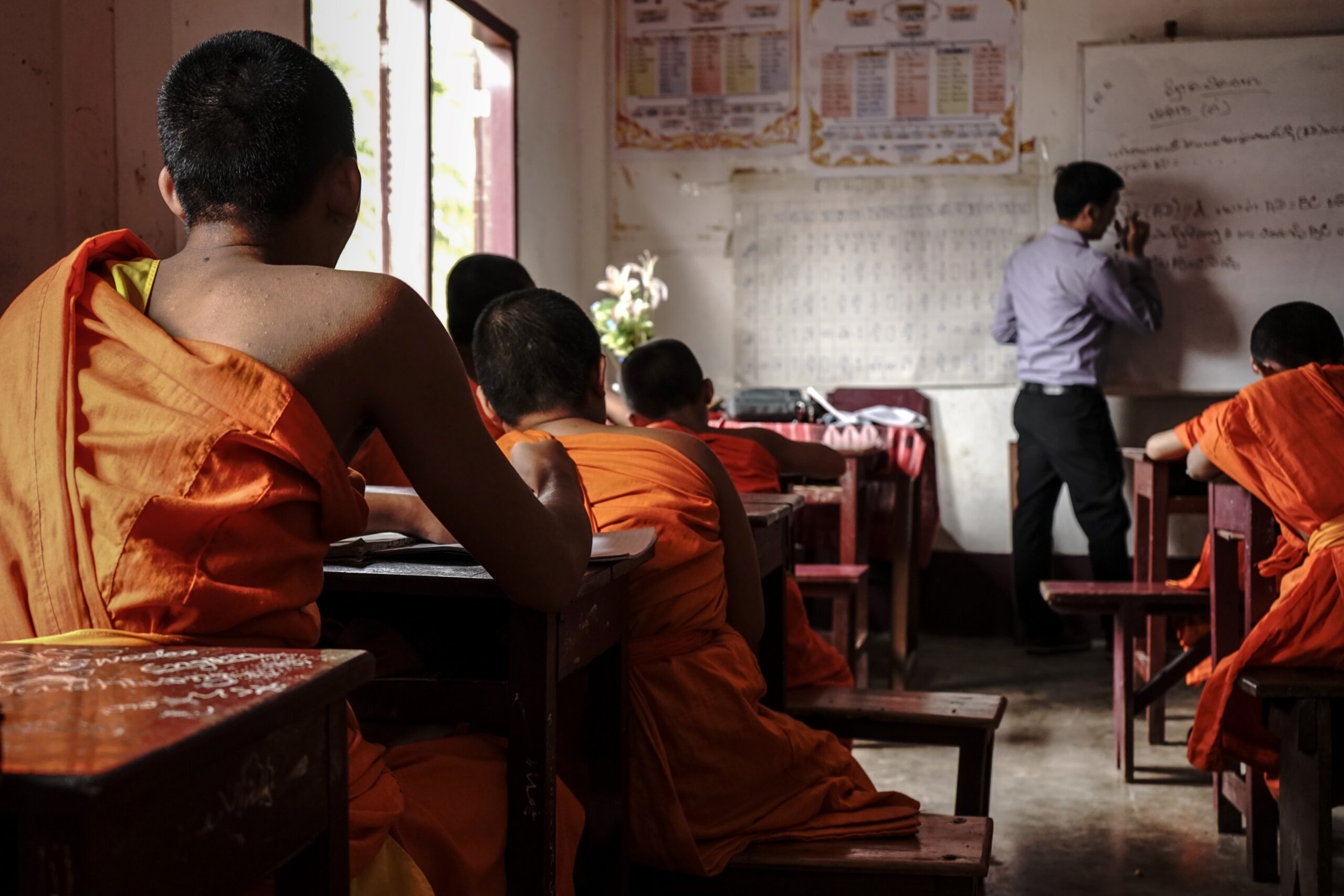
The pandemic also hit health services, including antenatal care, assisted births, and contraception, making conditions worse for women and children in remote areas.
Due to reduced access to routine health services, UNFPA and UNICEF estimate children are being sold into marriage as well. The UN agencies also found a 15%-23% increase in unintended pregnancies, which would likely lead to a higher risk of maternal death, expected to increase by 92% to 140%.
“Unlike other countries, because of the remoteness and lack of density in population, it is a far more costly exercise to engage in resolving these challenges in Laos,” Khan said.
The Lao Women’s Union (LWU), a prominent women’s rights organisation in Laos, reported a rise in domestic child sexual abuse, rape, and counselling requests by underage girls during the 2020 lockdown. The same causes will put an additional four million girls at risk of child marriage by 2023, according to UNICEF.
In this context, the government and UNICEF are working closely with organisations such as the LWU and National Commission for the Advancement of Women, Mothers and Children to carry out campaigns for awareness, laws and regulations.
Embedded in culture
In Laos, child marriage is a culturally common practice going back for centuries. It’s rooted in traditions and cultural beliefs in some ethnic minorities in rural areas. According to national darta, those from rural areas with a lack of educational opportunities are more likely to become brides by the age of 14.
“This is very much condoned culturally”, said Zhang, the child protection officer from UNICEF. “In some places, if the girl is not married by 20, she is considered already too old. Children face lots of cultural pressure in these contexts.”
This is largely due to a lack of information and awareness of the negative consequences that child marriage has on young girls, including missed educational opportunities, high levels of mental distress, and health risks from teenage maternity among others, Zhang said.
A large portion of the 49 ethnic groups across the country don’t have access to mainstream services. Although many live in remote locations, language barriers and lack of trust in new methodologies also contribute to the issue.
“The communities that are isolated are less likely to shift behaviours unless there is some interaction,” Khan also explained.
She believes that an effective way to reach out to remote communities and ethnic groups is to translate all available resources into local ethnic languages.
In order to tackle child marriage effectively, we need to have a clear understanding of its driving forces”
Yali Zhang, Chief of Child Protection at UNICEF Laos
Training ethnic healthcare staff is also essential for the local communities. “They can provide youth-friendly services, communicate in the local languages and sustainably substitute harmful local practices,” Khan said.
In an attempt to reach out to all children and youths across provinces and ethnic minorities, recent efforts from a multitude of parties have supported and promoted the effective use of hotlines accessible 24/7 to anyone with a mobile phone.
“In order to tackle child marriage effectively, we need to have a clear understanding of its driving forces and adopt diversified and multifaceted solutions in an integrated holistic approach,” Zhang suggested.
Slow but steady progress
To effectively tackle child marriage, among other issues, the Lao government has also developed the ‘Noy framework,’ an advocacy tool which helps identify challenges the country should focus on developing, among which there are teenage pregnancy, teenage marriage, high rates of secondary school dropouts, and child labour.
For each of these issues, the government has developed systematic interventions on both national and provincial levels. Comprehensive Sexuality Education (CSE) is one of them,
“This type of training is essential to tackle gender-related issues and power dynamics, and it gives generally responsible decision-making tools, consent, sexual awareness, and empowerment,” Khan said. “Violence can happen in any category of individuals, but the more power a woman has, the more choices she has to protect herself.”
While the government and institutions work to improve child protection services across the country, children like Houa and SongHer have one hope – to go back to school.
“My dream is to go back to school,” SongHer said. “Because I want to have the same knowledge as other girls.”
*The identities of children interviewed in this story have been withheld for privacy concerns.
